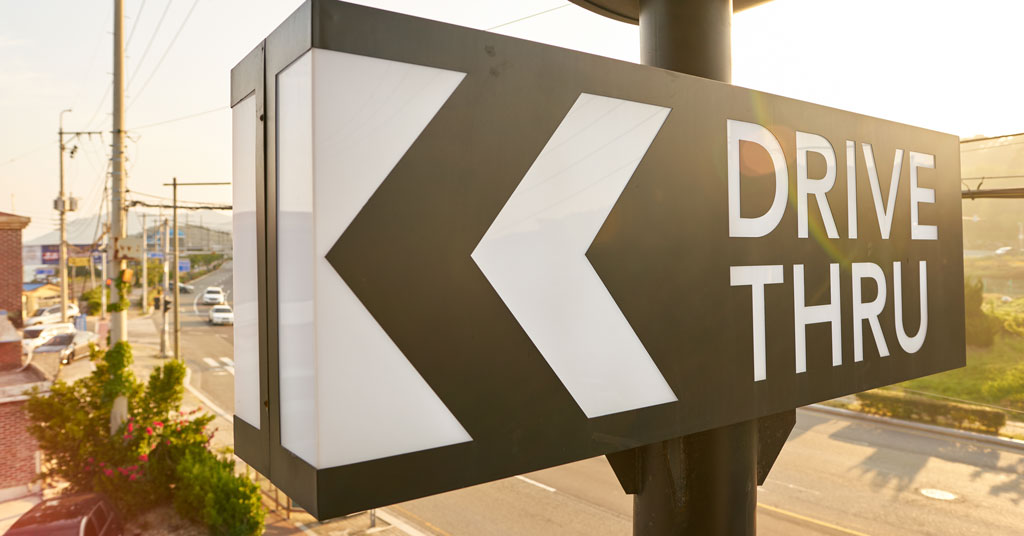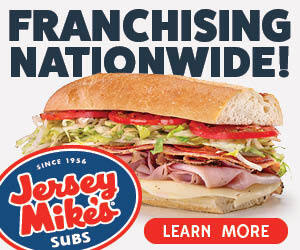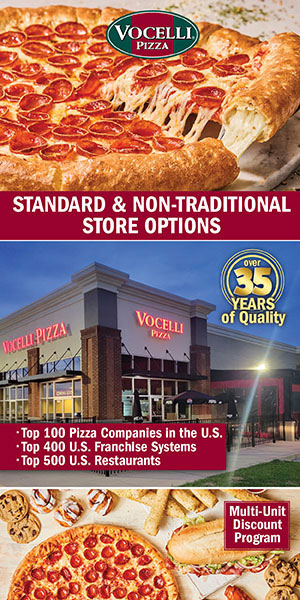AI and Drive-Thrus Team Up for Improved Customer Service

Americans have a driving need for fast food, so they’re bypassing franchise dining rooms for drive-thrus in increasing numbers. AI is helping fuel that.
The foodservice research firm Technomic reports a 30% increase in drive-thru sales from 2019 to 2022, a jump that can be credited, at least in part, to pandemic lifestyle changes. The number of people eating inside fast-food restaurants was down 47% in the first half of 2023 from the same period in 2019, according to the New York Times.
Today, those getting takeout at the drive-thru total about 70% of all fast-food sales in the U.S, according to a Deloitte report, “The Future of Restaurants: The New Normal and Beyond.” With the shift toward taking food for a ride comes a need for more intercoms, lanes, smaller dining rooms, and shifts in tasks. And, increasingly, the voice over the intercom asking you if you want fries with that may be AI-powered.
“AI technology has a vast potential in all aspects of the hospitality industry, and quick service is no exception,” said Phil Crawford, chief technology officer at CKE Restaurants, the franchisor of Hardee’s and Carl’s Jr., in an interview in QSR magazine. “AI-powered drive-thru systems can enhance operational efficiency, personalize customer experiences, and streamline order processes.”
AI can help, but there are potential downsides
As AI improves and becomes more a part of consumers’ daily lives, it will become an essential tool for business. This trend is reflected in the NRA’s 2023 “State of the Restaurant Industry” report, with 58% of respondents predicting the use of technology as an answer to labor shortages in 2024. Through integration into facial recognition, navigation apps, chatbots, supply chain management, and customer service, AI is predicted to help businesses stay competitive.
At drive-thrus, AI can improve service by streamlining order-taking. For example, algorithms can suggest personalized menu suggestions in apps based on previous choices. AI also can be used to capture and analyze data from each drive-thru order, helping franchisees better understand their customers and then make business decisions based on that data.
AI can also be employed to suggest menu items based on the vehicles it scans in a drive-thru lane. Xenial, which supplies this technology to franchises including Burger King and Jack in the Box, is already supplying this technology in California. A minivan might get kid-friendly meal suggestions, for example, while that two-seater sports car may see more “grown-up” suggestions.
AI technology is helping Panera Bread predict what customers might order, factoring in the season and the weather. In August, the brand began testing OpenCity’s voice ordering tech, called Tori, to take drive-thru orders at two locations in upstate New York.
Using AI-powered tech doesn’t come without risks and potential downsides. AI deployment could reduce a restaurant’s personal touch, and some customers will prefer speaking with a human at the other end of the intercom. Additionally, the ROI may be questionable until the cost of AI applications goes down. Smaller franchises also may find implementing AI more challenging than larger companies do. Integrating AI systems with point-of-sale and inventory management systems, necessary for successful AI use, could be an obstacle for some. There also have also been customer complaints that a noisy drive-thru can be a less than ideal spot for voice recognition technology, leading to order errors.
AI and labor challenges
A shortage of workers to staff franchise drive-thrus is making AI worth the risks at many franchise companies. According to a 2023 labor trends study by the IFA, the shortage of qualified labor is still the most pressing problem facing franchise businesses today, continued from 2022. In the survey, 87% of franchise owners reported having difficulty filling openings for both skilled and unskilled labor, down only a percentage point from 2022.
“Labor continues to be the most significant issue facing franchised businesses today,” said Michael Layman, senior vice president of government relations and public affairs at the IFA. “While conditions show improvement, it is clear that franchises are still feeling continued pressure when it comes to finding employees to fill open positions.”
Increases in minimum wages, which can (and do) vary greatly by state or even municipalities, could shrink margins for franchisees, making AI options more attractive for some types of work – and more as the technology continues to advance and businesses look for ways to economize. Goldman Sachs has predicted that AI could replace as many as 300 million full-time jobs.
Consumers’ ongoing drive for speed at the drive-thru adds even more pressure for food brands to shave seconds off those drive-thru wait times, and AI already is playing a part. Fast-food franchises are working to make their fast food faster, adding AI to their tech stack, shrinking their physical store footprints, and adding drive-thru lanes in the pursuit of shorter wait times for hungry, time-starved customers.
Keyvan Mohajer, co-founder and CEO of the voice-recognition platform SoundHound, said 2023 was a banner year for the adoption of voice-automated restaurant solutions. “This was the year it was finally happening,” Mohajer told Business Insider.
Chatting with Wendy’s FreshAI
The partnership between Wendy’s and Google Cloud, first forged in 2021, is growing with the advent of FreshAI – a chatbot that Matt Spessard, Wendy’s senior vice president and global chief technology officer, called industry-leading in a company blog in December.
FreshAI is personalized to each customer, a big benefit to the chain since there are more than 200 billion ways to order a Dave’s Double, he said. In tests at four company restaurants in Columbus, Ohio, the chatbot is speeding up service, shortening wait times by 22 seconds in comparison with the Columbus market average. Importantly, FreshAI isn’t sacrificing accuracy since it gets orders right 99% of the time.
“We created Wendy’s FreshAI to overcome the challenges traditional AI could not solve in the drive-thru, including understanding casual conversation with customers and handling Wendy’s menu full of customizations and configurations,” Spessard wrote.
More deployment of FreshAI is planned for this year, and Wendy’s franchisees will have the option of testing the platform. Plans include adding FreshAI to in-restaurant kiosks, the Wendy’s app, smart home devices, and more.
Introducing new tech successfully requires educating and training employees on how to use it and how it will affect their jobs. Missing that step has led to many change management failures, but Wendy’s seems to have that well in hand. According to a company statement, “Our Wendy’s technology and operations teams have spent thousands of hours working from the dining rooms of our restaurants to observe and talk to the crew and customers about their experience.”
Humans behind the curtain!
Presto Automation, a drive-thru automation company using OpenAI’s ChatGPT, raised some regulatory eyebrows by claiming that its Presto Voice product “consistently takes over 95% of the orders without human intervention.”
However, a recent Bloomberg article reported recent company filings with the SEC modifying that claim. According to Bloomberg, “The company, which went public last year, now says ‘off-site agents’ working in locales such as the Philippines help during more than 70% of customer interactions to make sure its AI system doesn’t mess up.”
What’s ahead?
Siri may help make grocery lists, and self-driving cars are already motoring their way through some cities. However, AI may not be ready to take the place of human employees, and some customers always will prefer speaking with a person and seeing a smiling face as they pick up their orders. The most likely scenario, at least for the near future, Forbes reports, is a drive-thru where humans are assisted, but not replaced, by AI solutions.
2023 was the year of generative AI hype, spurring fears of massive unemployment and unprecedented change as far back as 2019, when Cindy McLoughlin, managing partner at advisory company CohnReznick’s Consumer, Hospitality, and Manufacturing Practice, wrote: “There’s a misconception that tech will replace human interaction. Technology makes people more efficient so they can spend more time with the guests, which is what they’re supposed to do.”
Time will tell.
Annie Oeth, a freelance writer and editor with degrees in journalism and project management, covers business and franchising topics including public relations, marketing, technology, and organization. An experienced feature writer and PR specialist, she tells the stories of franchisees and franchising. Share story ideas with her at [email protected].
Share this Feature
Recommended Reading:
| ADVERTISE | SPONSORED CONTENT |
FRANCHISE TOPICS
- Multi-Unit Franchising
- Get Started in Franchising
- Franchise Growth
- Franchise Operations
- Open New Units
- Franchise Leadership
- Franchise Marketing
- Technology
- Franchise Law
- Franchise Awards
- Franchise Rankings
- Franchise Trends
- Franchise Development
- Featured Franchise Stories
| ADVERTISE | SPONSORED CONTENT |

$200,000
$65,000





 The multi-unit franchise opportunities listed above are not related to or endorsed by Multi-Unit Franchisee or Franchise Update Media Group. We are not engaged in, supporting, or endorsing any specific franchise, business opportunity, company or individual. No statement in this site is to be construed as a recommendation. We encourage prospective franchise buyers to perform extensive due diligence when considering a franchise opportunity.
The multi-unit franchise opportunities listed above are not related to or endorsed by Multi-Unit Franchisee or Franchise Update Media Group. We are not engaged in, supporting, or endorsing any specific franchise, business opportunity, company or individual. No statement in this site is to be construed as a recommendation. We encourage prospective franchise buyers to perform extensive due diligence when considering a franchise opportunity.